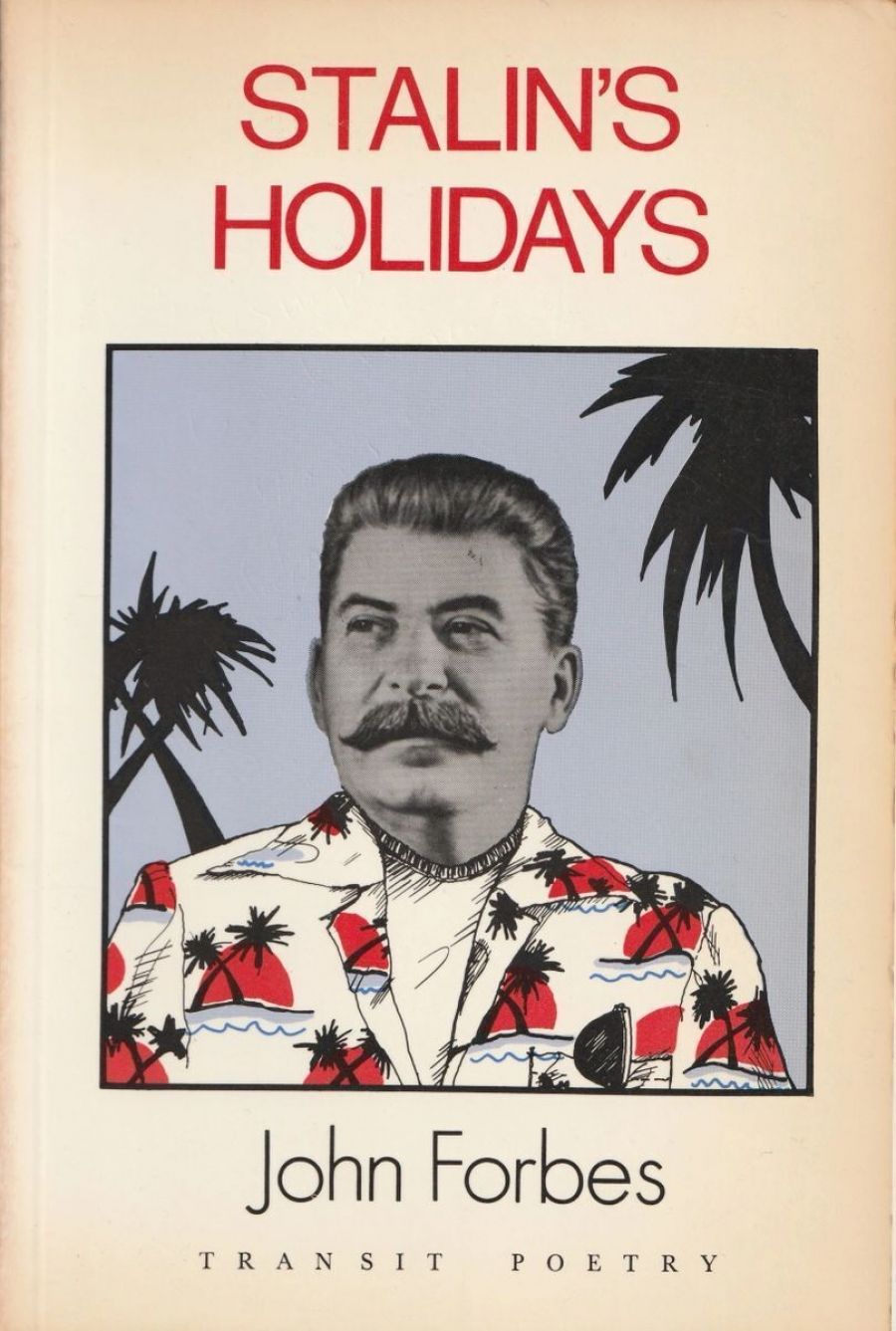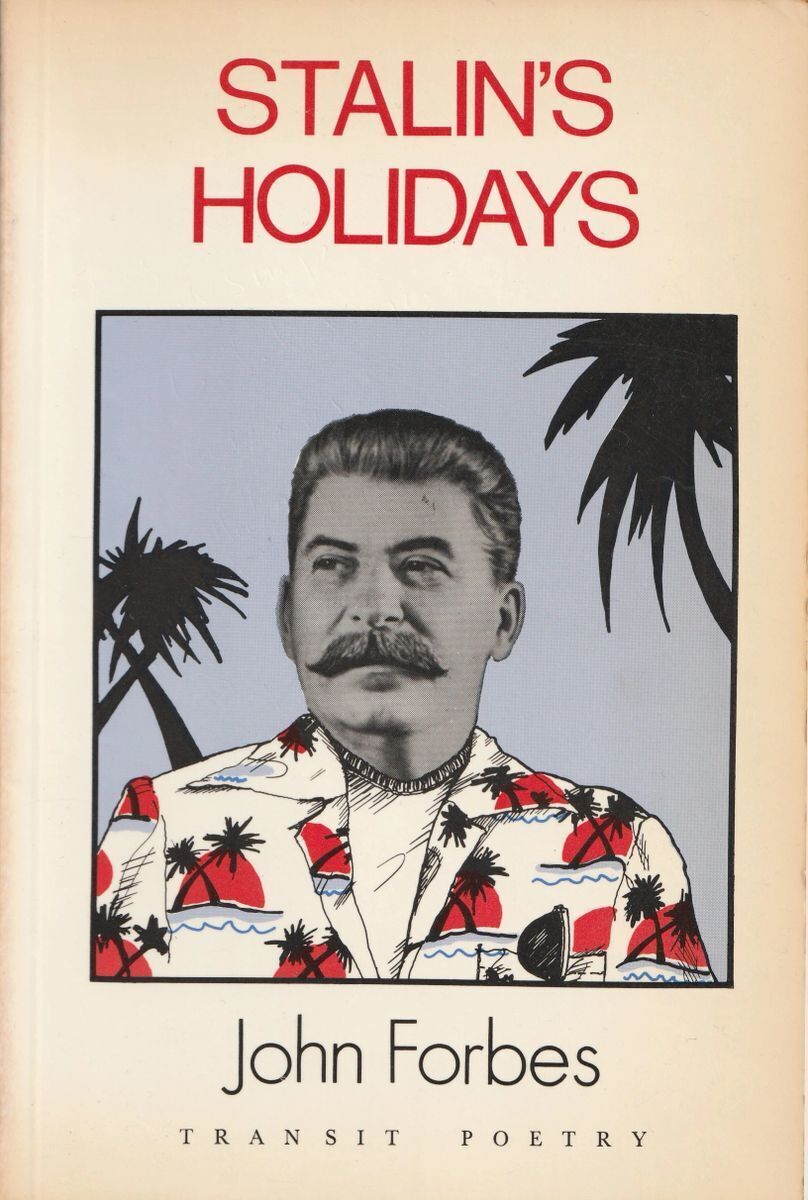
- Free Article: No
- Contents Category: Poetry
- Review Article: Yes
- Article Title: Snapshots
- Online Only: No
- Custom Highlight Text:
The poet John Ashbery, now a considerable force in American poetry, has said: ‘I think that any one of my poems might be considered to be a snapshot of whatever is going on in my mind at the time…’ Like John Ashbery – and Frank O’Hara (who was involved with the Abstract Expressionism scene in New York before being killed by a dune buggy in 1966) – John Forbes and Gig Ryan are, in Australia, poets who must be linked to the broad automatic writing phenomenon which gained strength with so-called Action Painting (or, to use its other name, Tachisme). The foundation of that art movement was surrealist painting, sculpture, and writing; and these were made familiar to young American artists when writers and painters such as Max Ernst and André Breton escaped from Europe before Hitler took over.
- Book 1 Title: Stalin’s Holidays
- Book 1 Biblio: Transit Poetry, $3.95 pb, 56pp
- Book 1 Cover Small (400 x 600):

- Book 1 Cover (800 x 1200):

- Book 2 Title: The Division of Anger
- Book 2 Biblio: Transit Poetry, $3.95 pb, 70pp
For Ashbery – and this I believe could apply to both Forbes and Ryan also – a poem is an ‘imaginative journey’ (or a dream journey), and its title is a keyhole through which the reader enters. The result is a series of ‘snapshots’ which, like all private ‘snapshots’, you might find interesting – or you may not. Poetry for Frank O’Hara was merely another activity to be placed ‘among many legitimate amusements’. He wrote innumerable ‘free-association’, ‘snapshot’ poems; and the best of these, such as ‘To the Film Industry in Crisis’ and ‘Should We Legalize Abortion?’, are alive with ‘spur-of-the-moment spontaneity’.
Gig Ryan’s ‘spontaneity’ often throws up trite lines such as this one: ‘love him in your hopeless way’. At times there is a slight echo of Sylvia Plath: ‘The nazi in your bed arranges you’. And she lacks the objectivity, humour, and the ability to stand off from her material the way the more accomplished John Forbes does.
O’Hara does not confront the reader with complex arguments or a philosophy of life; but he entertains with a direct view of the poet’s responses to such things as litter, the movies, and the New York landscape. Gig Ryan seems anxious to explore her private and emotion-charged world, but asks us with some difficulty to share her intense involvement with this world: ‘This is in morse-code. Please read / with your heart on.’ Like O’Hara, ideas – a personal philosophy – do not appear important to Gig Ryan: she is absorbed by the onslaught of day-by-day experiences, over which her control looks limited.
On the other hand, John Forbes has been able to distance himself from the onslaught; and he has mastered more poetic technique in the process. His poetry is varied and often entertaining; and his breezy wit is one of his strengths. Forbes, working on his part of the Australian scene, seems unable to shake off the influence of O’Hara; but in time perhaps he will, although O’Hara has dominated him for a number of years now. A few Australian poets (some based in Sydney) have been attracted to O’Hara’s free-wheeling method of composition. However, John Forbes is the best poet in-this country to come under his influence. He is far less self-indulgent than Gig Ryan; although there are pleasant exceptions in ‘The Division of Anger’ and ‘The Tenant’, for instance.
John Forbes has already made an original contribution to our literature, which is something Gig Ryan has yet to do. Forbes has achieved a handful of good poems by carefully observing contemporary Australia; and his clever chattiness – his ability to preserve the surface aspects of our existence – has had its impressive moments. But in Stalin’s Holidays he has not presented poems as successful as the now well-known ‘Four Heads & How To Do Them’ and his excellent ‘Ode to Tropical Skiing’. Highlights of Stalin’s Holidays are ‘Blonde & Aussie’ and ‘the best of all possible poems’, and succinct statements such as ‘Or / you can read Mayakosky / he’s I a sort of Communist Bruce Dawe’. And then there is ‘white australia’:
Why don’t all you Chinese
bastards stop disguising
yourselves as women &
fuck off?
John Forbes is strong when he is less derivative, when the content of his poetry is the result of astute observations by an intelligent, modern (I feel that it is necessary to use the word young) Australian mind: when the poems do not read as simply products ‘imported from America’. In The Division of Anger Gig Ryan says ‘the woman follows, vital as boredom, / and loving it’ and ‘you’re bored shitless’. And, unfortunately, I found many of her poems about being in bed, being loved, rather boring. But Gig Ryan gets out of herself when she writes like this:
Passing the Sao biscuits over the table
he’d dip them in the tea, and smoke.
The window looked back at the tiny room
like a Health Inspector.
You couldn’t explain to the Government.
If you enjoy poetry which is not concerned with developing ideas – poetry which flows as easily as good conversation (here I am thinking of John Forbes) – you will buy these books. But if you prefer poetry with a thematic structure – that continually makes you think deeply of worlds apart from the poet’s – these books won’t be for you.


Comments powered by CComment